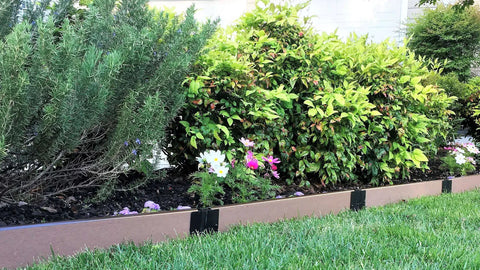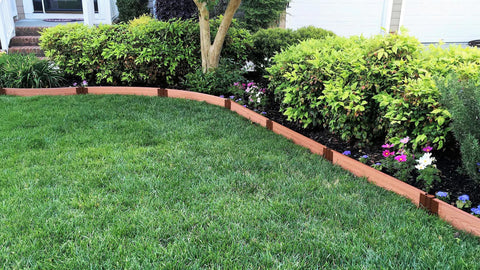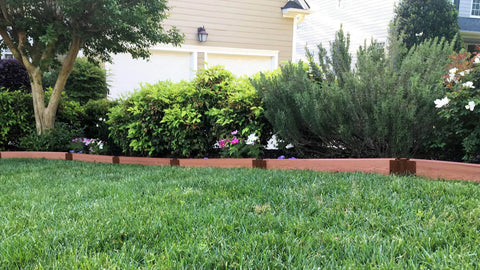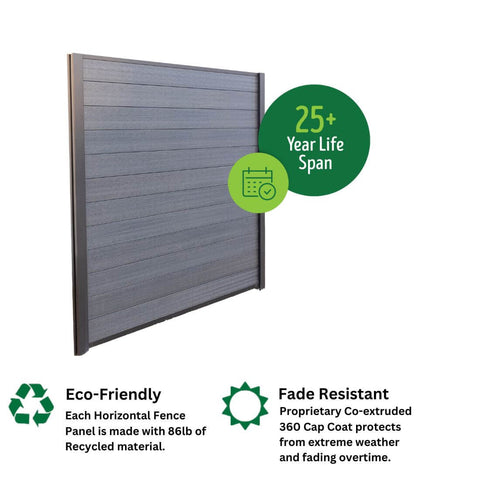In this article, we delve into the world of metal and wood raised garden beds, weighing the pros and cons of each. Whether you're a seasoned gardener looking to upgrade your setup or a novice keen on creating your first garden bed, this comprehensive guide will provide you with the insights needed to find the perfect garden bed for your green space.
What Are Metal Raised Garden Beds?

Our metal garden beds are a great alternative to traditional in-ground gardening. They provide a more convenient and manageable way to grow your plants, without the hassle of digging up soil and removing weeds. Made from durable metals like steel and aluminum, these structures come in a variety of sizes and styles, allowing you to customize your garden to your specific needs.
Plus, metal garden beds are worth the price, because they won't rot or decay over time, giving you a longer-lasting gardening solution that justifies their initial cost. Metal raised garden beds are also easy to assemble and require very little maintenance. All you need to do is fill the bed with soil and plants, and you're good to go.
Galvanized steel raised garden beds, another interesting alternative

Galvanized steel beds are becoming increasingly popular as an alternative to traditional garden beds. These types of garden beds offer many advantages, including durability, strength, and resistance to weathering and rusting. They are also relatively low maintenance, require no painting or staining, and are able to withstand heavy rainfall and other harsh environmental conditions.
Additionally, galvanized garden beds are an eco-friendly solution that is made from recyclable materials. They are a great option for gardeners who want to grow their own vegetables, herbs and flowers in a space that is both easy to maintain and aesthetically pleasing.
What are Wood Garden Beds?
Wood raised garden beds, or composite wood beds, are the most popular way to grow plants and vegetables above ground level. They are constructed with wooden boards, which are joined together to create a frame that sits on top of the soil. The wooden sides of the raised garden bed keep the soil contained, prevent soil erosion and make it easier to manage the garden area. These garden beds are ideal for areas that have poor soil quality or limited space.
Wooden raised garden beds can be used on patios, balconies, or rooftops, and can be constructed in any shape and size. They are also environmentally friendly, as they prevent soil compaction and reduce the need for tilling. Wood raised garden beds can be filled with any type of soil and require minimal maintenance.
Additionally, they provide better drainage and soil aeration. Wood raised garden beds are a sustainable and efficient solution for those who love gardening, regardless of their level of expertise.
Pros and Cons of Metal Raised Garden Beds

Metal raised garden beds are made from materials such as galvanized steel or corrugated metal. These are strong and durable materials that can last for years, and they are great for those looking for a long-lasting option for their garden. However, they may not be the best choice for all gardeners, as they come with both advantages and disadvantages.
Advantages of Metal Raised Garden Beds
-
Durability: Metal raised beds are typically more durable than wooden or plastic beds. They resist rot and insect damage and can last for many years, even decades, with minimal maintenance.
-
Heat absorption: Metal, especially darker colors, can absorb and retain heat well. This can be beneficial in colder climates as it can extend your growing season by warming the soil faster in spring and keeping it warm later into fall.
-
Aesthetics: Many people find metal beds to be aesthetically pleasing, providing a modern, industrial, or rustic look depending on the type and finish of the metal used.
-
Customization: Metal beds can often be easily customized in terms of size, shape, and height. They can be designed to fit specific spaces or needs.
Disadvantages of Metal Raised Garden Beds
-
Cost: Metal raised beds are typically more expensive than wooden or plastic ones. The initial cost may be higher, although they can be cost-effective in the long term due to their durability.
-
Heat conduction: While the ability of metal to absorb and retain heat can be a pro, it can also be a con in hot climates, where it can cause the soil to become too hot and potentially harm plant roots.
-
Potential for sharp edges: Depending on the design and construction, metal beds can have sharp edges that could pose a risk of injury.
-
Potential for rust: Over time, some types of metal can rust if not properly treated or maintained. This could potentially affect the aesthetic appeal and potentially leach into the soil.
-
Lack of insulation: Metal does not insulate the soil as well as wood does, which could potentially impact root temperatures and therefore plant health, particularly in very cold or very hot weather.
Pros and Cons of Wood Raised Garden Beds
Wood raised garden beds are a popular choice for gardeners, as wood is a natural and attractive material that can complement almost any garden style. However, there are also some disadvantages to using wood for your raised garden beds that you should consider.
Advantages of Wood Raised Garden Beds
-
Aesthetically pleasing: Wooden raised garden beds add a natural and rustic look to your garden, making it look more charming and inviting.
-
Customizable: These garden beds can be easily customized to fit your garden's size and shape, making them an excellent option for irregularly shaped gardens.
-
Better drainage: Wooden garden beds allow for better drainage compared to other materials like plastic or metal. The drainage provided by the wood allows the plants to grow better and reduces the risk of root rot.
-
Longer lifespan: With proper maintenance, wooden raised beds can last for many years, making them a worthwhile investment.
Disadvantages of Wood Raised Garden Beds
-
High Maintenance: Wooden garden beds require regular maintenance to prevent rotting, warping, and insect infestations. This means that you'll need to spend time and money on upkeep.
-
Environmental impact: Wooden beds made from treated wood can pose an environmental risk due to the chemicals used to treat the wood. It's essential to use untreated wood or use a safe treatment method to avoid any harm to the environment.
-
Limited lifespan: Even with proper maintenance, these garden beds have a limited lifespan compared to other materials. Over time, the wood will begin to rot and break down, requiring replacement.
Choosing the Best Materials for Raised Garden Beds

Choosing the best materials to build raised garden beds depends on several factors, including your budget, the size and location of your garden, and your personal preferences. Some popular materials for raised garden beds include wood and metal. Wood is a popular option because it is affordable, easy to work with, and can blend well with the natural environment.
Metal, on the other hand, can be more expensive, but it is durable and long-lasting material. Ultimately, the best option for your raised garden beds will depend on your individual needs and preferences, as well as the specific conditions of your garden.
Frequently Asked Questions
What is a raised bed garden?
A raised bed garden is a gardening technique that involves planting in beds that are elevated above the ground.
Can a raised bed be made of other materials besides wood or metal?
Yes, raised garden beds can be made of a variety of materials, including plastic, concrete, stone, and even straw bales. The choice of your raised bed materials usually depends on individual preferences and budget.
What type of wood is best for constructing a wooden raised garden bed?
Cedar and redwood are popular choices for constructing wooden raised garden beds. They are naturally resistant to rot, insect infestation, and decay.
Should I use galvanized steel for constructing a raised garden bed?
Yes, galvanized steel is a great material for constructing a raised garden bed. It is rust-resistant, withstands harsh weather conditions, and does not leach chemicals into your garden soil.
Can I build my raised garden bed kit?
Yes, most raised garden bed kits come with instructions on how to construct the bed. The process usually involves connecting the panels or boards, inserting corner brackets, and securing the bed in place.
What’s the difference between steel raised beds and metal raised beds?
There is no significant difference between steel garden beds and metal beds. Steel raised beds are a type of metal garden bed that is made entirely or partly of steel.
Are metal garden beds better than wooden raised garden beds?
Metal garden beds are better than wooden raised garden beds in terms of durability, longevity, and pest prevention. However, wooden raised garden beds are more affordable and easier to customize.
Should I source my own wood for building a wooden raised garden bed?
It is recommended to source your own wood from a forested woodlot or a reputable supplier. This will ensure that the wood is free from chemicals and pesticides that can contaminate your garden soil and harm your plants.
]]>

























































